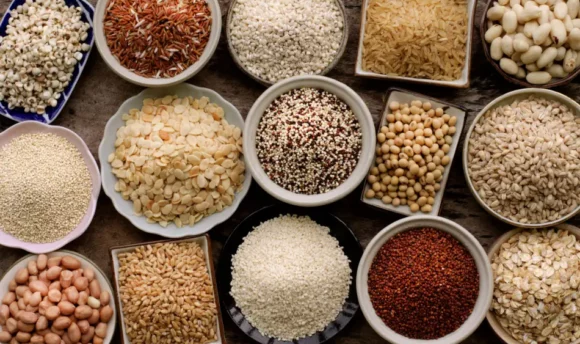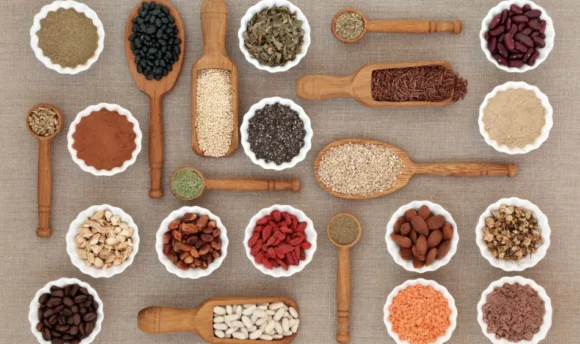20+ Foods High in Iron: Say Goodbye to Fatigue
Learn the secrets of incorporating iron-packed foods into your diet
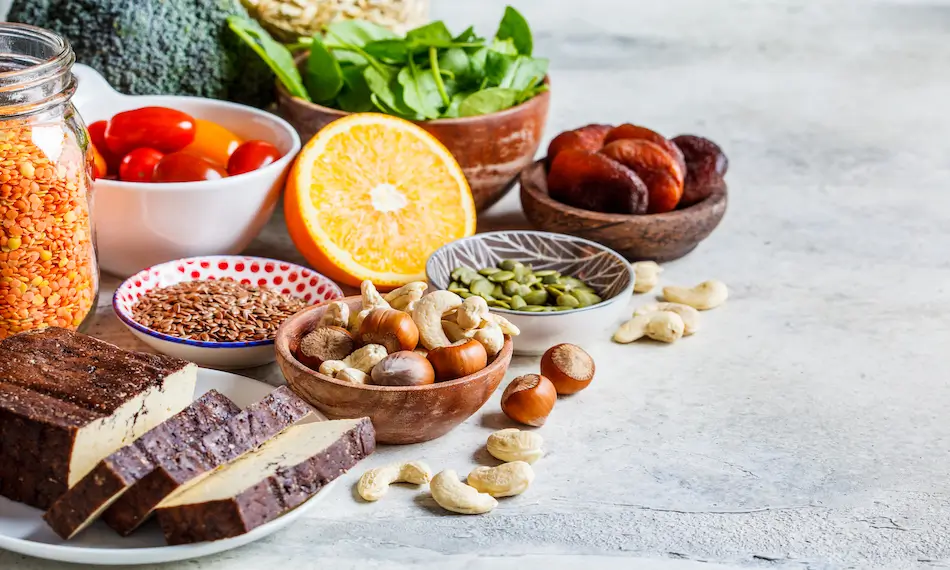
As an essential mineral, iron plays a key role in making hemoglobin. In simple terms, this is a protein that helps red blood cells carry oxygen to cells, muscles, and tissues. While maintaining healthy growth and development in children, iron is also vital for the function of various hormones throughout the body.
However, your body can’t produce iron on its own, meaning that you must get it through dietary sources. Having critically low levels of this important nutrient, known as anemia, is therefore one of the most common deficiencies globally, causing symptoms such as fatigue, headaches, lightheadedness, shortness of breath, and hair loss.
Fortunately, there is a huge variety of delicious iron-rich foods to choose from that make it easy to keep anemia at bay. Find out exactly what these foods are, and how they should be included in your diet to maintain an adequate iron intake.
20+ Foods High in Iron: Essential Foods for a Healthy Diet
Whether you’re pregnant, suffering from anemia, or simply want to ensure you’re getting all of the essential vitamins and minerals into your diet, it’s important to keep your iron intake up with a range of healthy foods.
Let’s dive into the evidence, exploring which foods are the best sources of iron.
Meat and poultry

As well as being packed full of protein and B vitamins, meat and poultry like pork, beef, and chicken contain heme iron, the type most easily absorbed by the body. While your body can only absorb between 2 and 20% of nonheme iron, which is found in plant foods, it takes up to 35% from meat.
Iron deficiency anemia may therefore be less likely for those who eat animal foods on a regular basis.


“Including vitamin C-rich foods in your diet can boost iron absorption. For instance, when suggesting an iron-rich meal to a client, I might propose preparing homemade fajitas. The chicken or beef contributes heme iron, and when paired with bell peppers (abundant in vitamin C) and a squeeze of lime, the absorption of iron is further enhanced. Cooking in a cast-iron skillet can also add extra iron to the meal.
It’s important to note that calcium-rich foods, as well as coffee and tea, can hinder iron absorption. I recommend avoiding the consumption of milk, tea, or coffee alongside an iron-rich meal.”
You may be surprised to hear that organ meats such as liver, heart, and kidneys are among the best sources of this essential nutrient, with one 100-gram serving of beef liver serving 36% of the recommended daily value (DV).
Here’s how much iron you can find in 100 grams (g) of 4 different meats:
- Lamb – 1.66 milligrams (mg)
- Turkey – 1.72 mg
- Beef – 2.74 mg
- Liver (pork, chicken, or beef) – 6.54 mg
Seafood
Along with being excellent iron sources, many types of seafood contain omega-3 fatty acids, an essential nutrient that must be obtained through your diet. Omega 3s help to raise “good” HDL cholesterol levels, lower triglycerides, and prevent cardiovascular disease.
Shellfish such as oysters, clams, and mussels are especially great sources of heme iron, and for such small creatures, contain huge amounts of lean protein. For example, one 100-gram serving of clams packs 25.6 grams of this nutrient, which is important for muscle growth and repair.
It’s recommended to incorporate 2 to 3 servings of seafood into your weekly meal plan, including the following iron-rich choices:
- Sardines – 2.92 mg (per 100 g)
- Tuna – 1.02 mg
- Oysters – 9.21 mg
Vegetarian sources
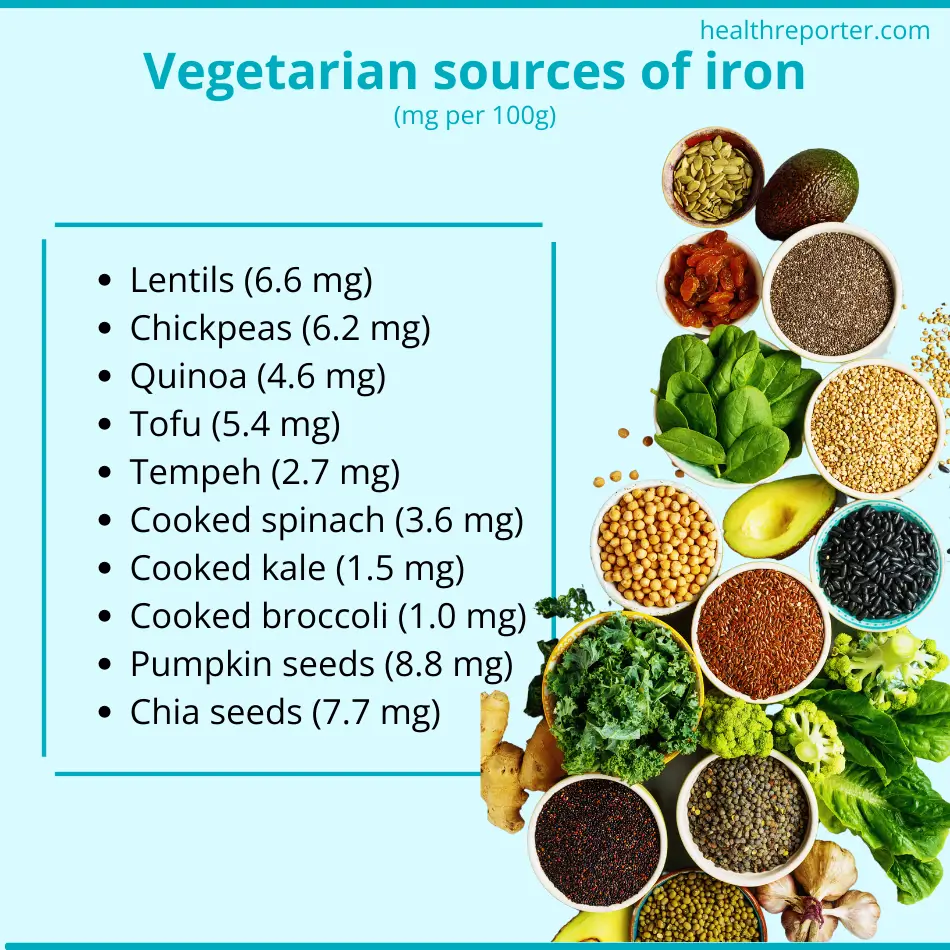
Whether you’re vegetarian or simply looking to reduce your meat consumption, bean-based foods are a great alternative source of iron. One great example is tofu, a commonly used meat substitute made from soybeans that packs in 19% of your iron DV, and 22 grams of protein per serving.
What’s particularly beneficial about tofu is that it contains isoflavones, plant compounds that perform a range of functions such as relieving menopause symptoms and lowering your risk of heart disease.


“The bioavailability of iron from plant-based sources, often referred to as non-heme iron, is typically lower than that from animal-based sources, or heme iron. Heme iron is more readily absorbed by our bodies, while non-heme iron requires certain factors to enhance its absorption, such as vitamin C.” – the CEO of Elderly Guides says.
Legumes like beans and lentils are another ideal pick. Research suggests that they may help to reduce inflammation, therefore preventing conditions such as diabetes, cancer, heart disease, and Alzheimer’s.
Some vegetarian iron sources we’d recommend including in your diet are:
- Black beans – 1.69 mg (per 100 grams)
- Tofu – 5.4 mg
- Lentils – 6.6 mg
- Chickpeas – 6.2 mg
- Gren peas – 1.5 mg
Grains and cereals
When it comes to grains, we’d most often recommend choosing whole grains like brown rice, oatmeal, and whole wheat bread or pasta. These types are the richest sources of iron, fiber, and antioxidants, as the process of refining grains removes the parts containing these nutrients.
Although iron is a naturally occurring element, manufacturers often add the mineral to refined grains to make them more nutritious, including foods such as breakfast cereals.
Some iron-rich cereals are also loaded with added sugars, so try to select only those like oatmeal, bran flakes, Life cereal, and wheat biscuits that are low-sugar and high fiber. Choose grains such as:
- Oatmeal – 3.44 mg (per cup, raw)
- Quinoa – 7.77 mg (per cup, raw)
- Fortified cereals – 18 mg per serving
Fruits and vegetables
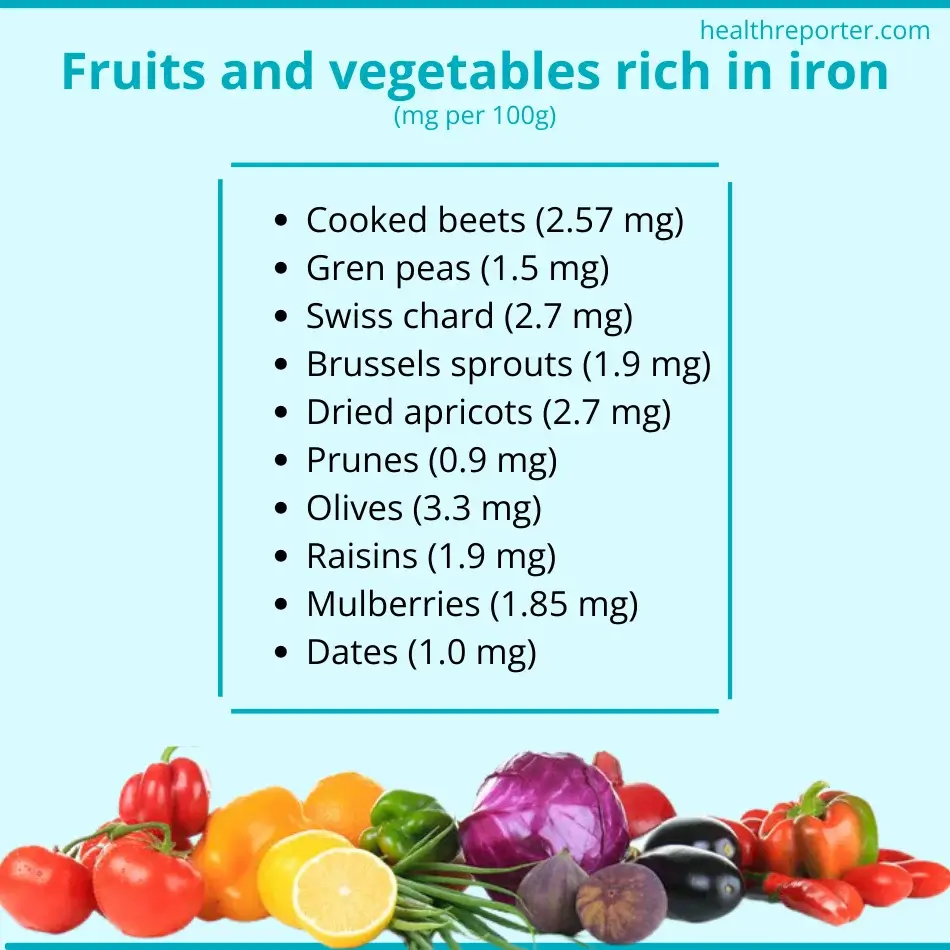
As well as being loaded with nonheme iron, fruits and vegetables are low-calorie, yet packed full of vitamins and essential for a balanced diet. For instance, fiber helps to maintain good digestion and gut health. It also keeps you fuller for longer, making fruits and vegetables a key weight loss food.
Fruits in particular are excellent sources of vitamin C, a water-soluble vitamin and antioxidant that may promote bone growth and repair, protect the body against free radical damage, and improve the absorption of nonheme iron.
When it comes to getting your fruit and vegetable fix, some of the top sources of iron per 100 grams include:
- Sweet potatoes – 0.61 mg
- Beets – 2.57 mg
- Raisins – 1.9 mg
- Dried apricots – 2.7 mg
- Spinach (cooked) – 3.6 mg
Nuts and seeds
Nuts and seeds are crammed with healthy unsaturated fats that help to keep your heart healthy, by lowering triglycerides and improving cholesterol levels. Eating high-fat foods has also been shown to reduce waist circumference, particularly when eaten as part of a weight loss diet like the Mediterranean protocol.
As well as nonheme iron, seeds are also rich in proteins and healthy fats, along with minerals like magnesium, potassium, and calcium that have been shown to lower blood pressure. This can help in reducing your risk of chronic illnesses like heart disease and stroke.
Grab a handful as a healthy snack to satisfy cravings and hit your daily iron goals, use them while baking, or add the following nuts or seeds to yogurt and salads:
- Cashews – 1.89 mg per 28 g
- Pumpkin seeds – 2.5 mg per 28 g
- Sunflower seeds – 2.42 mg per cup
How Much Iron Do I Need?
The amount of iron required to maintain optimal red blood cell function throughout the body varies from person to person, depending on factors such as age, sex, dietary choices, and whether you’re pregnant or breastfeeding.
For instance, as iron deficiency is common during pregnancy, pregnant women need around 27 milligrams to aid the growth and development of their babies. People on a vegetarian or vegan diet also require 1.8 times more than the normal recommended values, because the body absorbs less iron from plant-based sources than from animal foods.
Based on age and gender, here’s a summary of recommended iron intakes for non-plant-based, non-pregnant adults and children:
- Under 6 months – 0.27 milligrams (mg)
- 7 to 12 months – 11 mg
- 1 to 3 years – 7 mg
- 4 to 8 years – 10 mg
- 9 to 13 years – 8 mg
- Boys 14 to 18 years – 11 mg
- Girls 14 to 18 years – 15 mg
- Men 19 to 50 years – 8 mg
- Women 19 to 50 years – 18 mg
- Adults 51 years and over – 8 mg


“Iron plays a significant role across all population groups.
For children, iron is crucial for growth and development. Foods like fortified cereals, lean meats, and beans are good sources.
Pregnant women need more iron due to increased blood volume and growth of the baby. Iron-fortified foods and lean meats are beneficial.
Athletes, especially endurance ones, may need more iron to replace what’s lost through sweating and to support increased oxygen transport to muscles. Iron-fortified foods, lean meats, and legumes can help.
The elderly may struggle with decreased nutrient absorption and should focus on easily digestible sources of iron like fortified cereals and lean meats.” – says Jeremiah Shaw, runner and CEO of Running Wilder.
Tips for Increasing Iron Intake
Other than eating more iron-rich foods, you can ensure that your body absorbs more nutrients by looking at how you consume them. Here are 3 handy hacks for increasing your intake:
#1 Cooking in cast iron pans
One easy way of upping your intake is to use iron cookware while preparing your meals, such as a cast iron skillet. Some of the iron from these pans transfers into your food, and a study found that it can increase the iron content of foods with high moisture levels, such as tomato sauce, by approximately 16%.
In the same study, children who consumed snacks cooked in cast iron pots for 4 months had a 7.9% increase in hemoglobin levels, showing that this is an effective strategy for alleviating anemia.
#2 Pairing iron-rich foods with vitamin C sources
If you’re hoping to increase your iron intake, try eating foods like citrus fruits, peppers, brussels sprouts, raw spinach, and tomatoes at the same time as sources of nonheme iron.
These foods are high in vitamin C, also known as ascorbic acid, an antioxidant that encourages your body to absorb more iron. While it has some merits for enhancing iron absorption, ascorbic acid doesn’t necessarily have the same effects for foods high in heme iron, such as meat, poultry, and fish.


“I can personally attest to the benefits of combining foods high in iron with sources of vitamin C to maximize iron absorption. I’ve found that eating iron-fortified cereal with a glass of orange juice is a simple yet effective way to keep my iron levels within the recommended range.” – Mr. George Yang, founder of Oxygenark shares.
#3 Opting for iron-fortified products
Although we’d recommend consuming mainly whole foods, such as fruits, vegetables, legumes, and whole grains, eating some fortified products is an easy way to up your iron intake. These are products that have had iron added to them during the manufacturing process, and often include bread, rice, and various cereals.
Look for breakfast cereals containing 100% of the daily value for iron, and avoid those loaded with added sugars, colors, and artificial flavorings.
Risks of Excessive Iron Intake
While eating the recommended daily value of iron is essential for healthy growth and development, consuming too much can be toxic.
Your body naturally regulates the rate of iron absorption from the digestive tract using a hormone called hepcidin. However, disorders that suppress hepcidin production prevent this process, leading to an overload of iron in your tissues and organs.
One such condition is hereditary hemochromatosis, a genetic disorder that causes the body to absorb excessive amounts of iron from food. Left untreated, this can increase your risk of diabetes, cancer, arthritis, liver problems, and heart failure.
As the body gets rid of excess iron through blood, an effective way of preventing toxicity is by donating blood regularly, along with checking that you aren’t exceeding your recommended daily iron value.
Another condition is iron poisoning, which occurs when you overdose on iron supplements. This can cause increased levels of free iron to circulate around the body, which, over time, fatally damages your cells, liver, and brain. Some key symptoms of this are nausea, vomiting, and stomach pain.
Avoid iron poisoning by following the instructions on iron supplements and sticking to the recommended dosage. Below 20 milligrams is generally considered to be safe, up to 60 mg may be moderately toxic, and amounts higher than this can cause circulatory collapse.
A Word From Our RD


Affecting 4 to 5 million people in the US each year, anemia is one of the most common deficiencies. Women who are pregnant or menstruating, children, and those on kidney dialysis are at the highest risk of developing this condition.
Although adding plenty of iron-rich foods into your diet is the most effective way of preventing anemia, it’s worth pointing out that some of these foods, such as liver, liverwurst, and pate, also contain higher levels of vitamin A. Consuming too much of this vitamin can cause birth defects, so those who are pregnant should avoid eating liver unless advised otherwise.
For those struggling to up their iron intake, taking supplements is a convenient strategy. However, you should always stick to the recommended dose to avoid toxicity. If you are experiencing any digestive upset or nausea, consult your doctor immediately, who can advise you on the best steps to take going forward.
FAQs
Although it is possible to meet the recommended daily value of iron through a vegetarian diet, you are more likely to develop anemia. This is because the body absorbs less iron from plant-based sources compared to animal foods.
You can test your iron levels by visiting a doctor, or using an at-home iron testing kit. This will indicate whether your iron levels are normal, too high, or too low. If the results indicate an iron deficiency or overload, consult a healthcare professional as soon as possible.
Iron supplements aren’t necessary if you already consume plenty of the nutrient through dietary food sources. However, if you have an iron deficiency, a doctor may recommend that you take a supplement to restore normal levels.
Conclusion
Maintaining adequate iron levels is crucial for proper bodily function, as it helps to provide oxygen to your cells and muscles, produces hormones, and aids growth and development. You can keep these processes working smoothly by eating a range of heme and nonheme iron-rich foods, from meats and seafood to fortified breakfast cereals.
If you’re frequently experiencing symptoms such as fatigue, dizziness, and headaches, you should consult a healthcare professional, who can recommend ways to treat an iron deficiency.

















































 Select your language:
Select your language: 






